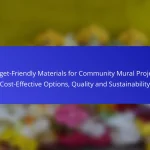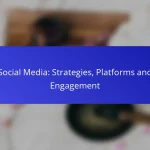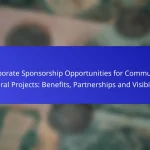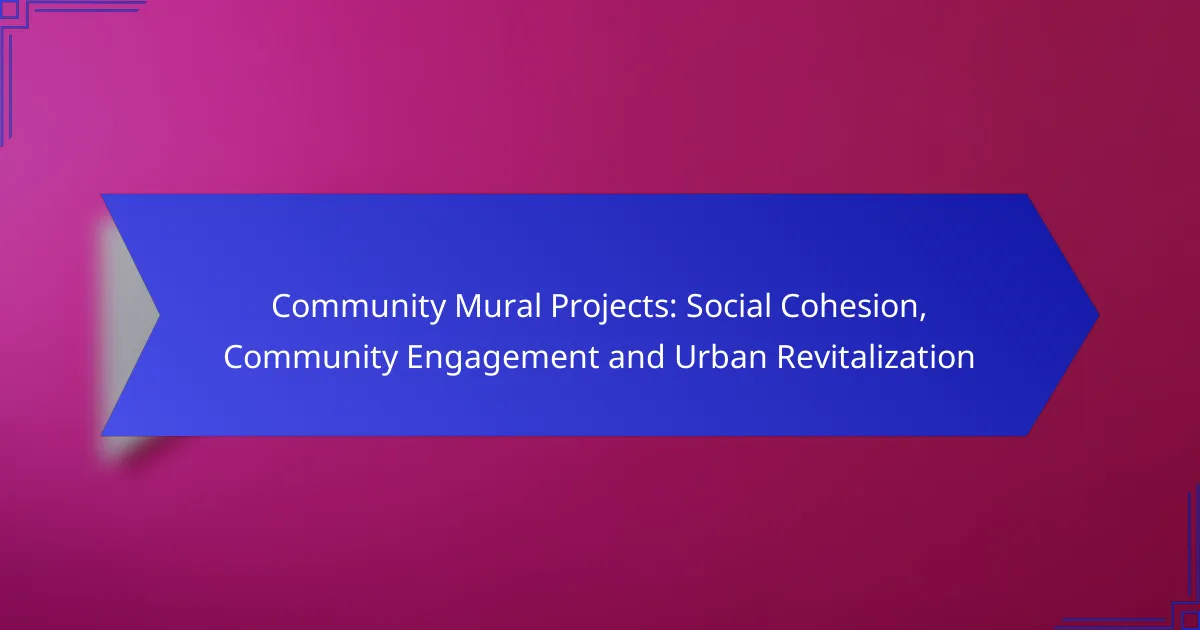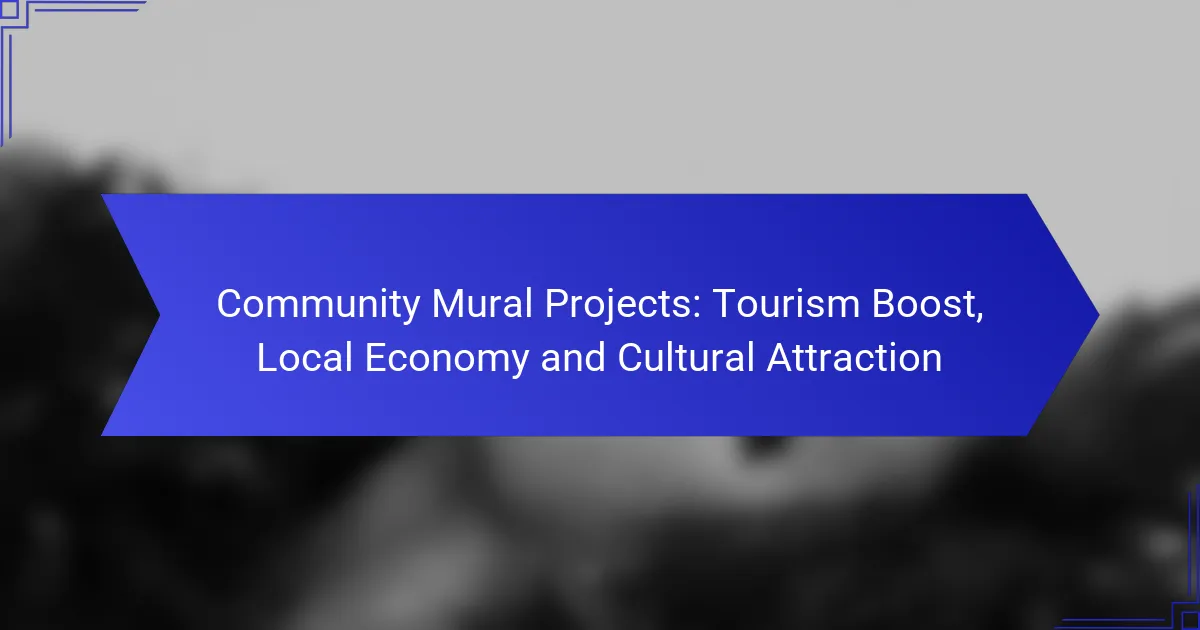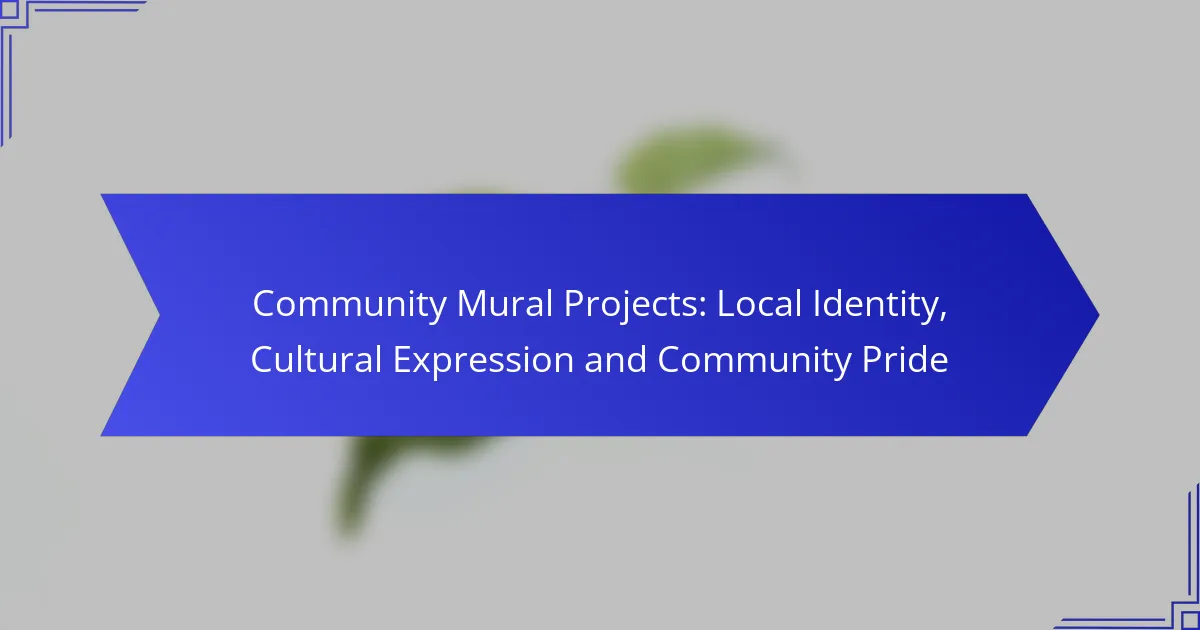Community mural projects serve as powerful tools for educational engagement, allowing participants to connect with their local culture through hands-on artistic experiences. By fostering creativity and collaboration, these initiatives not only enhance individual skills such as teamwork and project management but also promote a sense of community ownership and social interaction among residents.
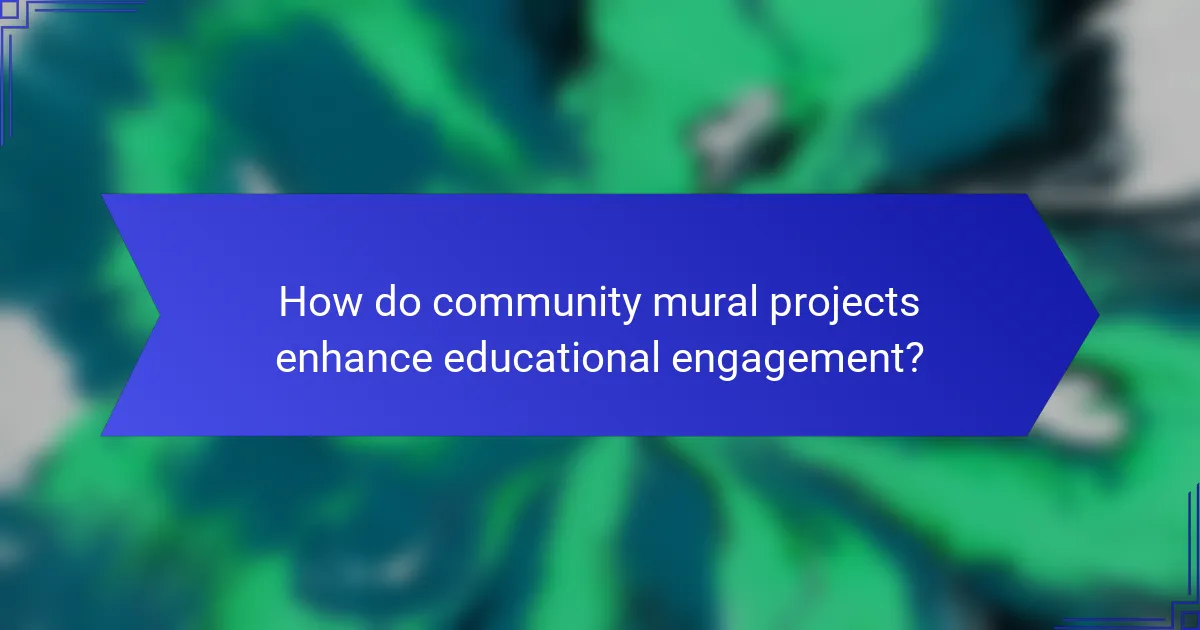
How do community mural projects enhance educational engagement?
Community mural projects enhance educational engagement by providing interactive and immersive experiences that connect participants with their local culture and history. These projects foster creativity and collaboration, allowing individuals to learn through hands-on activities while contributing to their community.
Hands-on learning experiences
Hands-on learning experiences in community mural projects allow participants to actively engage with art-making processes. This practical approach helps individuals develop skills such as painting, design, and teamwork, which are essential for personal and professional growth.
For instance, participants can learn about color theory, composition, and techniques used in mural painting. These experiences not only build artistic skills but also enhance critical thinking and problem-solving abilities as participants navigate challenges during the project.
Collaboration with local schools
Collaboration with local schools is a key component of community mural projects, as it encourages students to apply their classroom knowledge in real-world contexts. Schools can partner with mural artists to create projects that align with educational curricula, making learning more relevant and engaging.
Such partnerships often include field trips, where students visit mural sites to observe the creative process, followed by classroom discussions that deepen their understanding of art and community. This collaboration can also foster a sense of pride and ownership among students as they contribute to a lasting community landmark.
Workshops led by artists
Workshops led by professional artists provide invaluable opportunities for participants to learn directly from experienced creators. These workshops often cover various aspects of mural creation, including design principles, painting techniques, and project management.
Participants can gain insights into the artistic process and receive personalized feedback, which can significantly enhance their skills. Additionally, these workshops can be tailored to different age groups and skill levels, ensuring inclusivity and accessibility for all community members.
Integration of local history and culture
Integrating local history and culture into mural projects enriches the educational experience by connecting art with community identity. Murals can depict significant historical events, cultural symbols, or local legends, fostering a deeper appreciation for the community’s heritage.
By involving local historians and cultural leaders in the planning process, projects can accurately represent the community’s story. This approach not only educates participants about their surroundings but also encourages dialogue and reflection on the community’s values and aspirations.
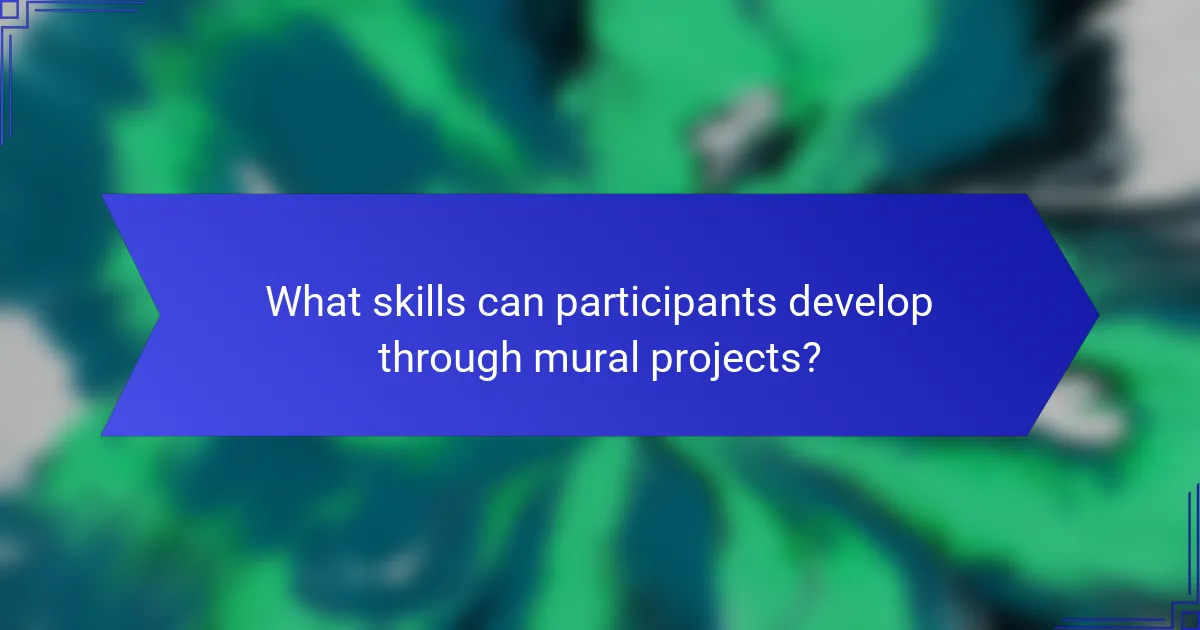
What skills can participants develop through mural projects?
Participants in mural projects can develop a variety of skills, including artistic techniques, project management, teamwork, and community organizing. These skills not only enhance individual capabilities but also foster a sense of collaboration and community engagement.
Artistic techniques and styles
Engaging in mural projects allows participants to explore different artistic techniques and styles, such as spray painting, brushwork, and stencil art. They can learn about color theory, composition, and how to create depth and texture in large-scale works.
Hands-on practice is essential; participants can experiment with various mediums and tools to discover what best suits their creative expression. Workshops led by experienced artists can provide valuable insights and guidance.
Project management skills
Mural projects require effective project management skills, including planning, budgeting, and scheduling. Participants learn to set timelines, allocate resources, and manage materials, which are crucial for successful project execution.
Understanding how to coordinate tasks and monitor progress helps ensure that projects stay on track. Participants can benefit from using project management tools or software to streamline their efforts and enhance organization.
Teamwork and communication
Successful mural projects rely heavily on teamwork and communication. Participants must collaborate with artists, community members, and stakeholders, fostering an environment of open dialogue and shared ideas.
Developing strong communication skills is essential for articulating creative visions and resolving conflicts. Regular team meetings and feedback sessions can enhance collaboration and ensure everyone is aligned with the project goals.
Community organizing
Mural projects often involve community organizing, where participants engage local residents and stakeholders to gather support and input. This process helps build relationships and encourages community pride in the project.
Participants can learn how to mobilize volunteers, promote events, and create outreach strategies. Understanding the needs and interests of the community is vital for ensuring that the mural reflects local culture and values.

How do community mural projects foster community involvement?
Community mural projects enhance community involvement by creating collaborative spaces where residents can actively participate in the artistic process. These projects not only beautify neighborhoods but also encourage social interaction and a sense of ownership among participants.
Volunteer opportunities
Volunteer opportunities in community mural projects allow residents to contribute their time and skills to the creation of public art. Local organizations often seek volunteers for various roles, including painting, organizing events, and promoting the project. Engaging volunteers fosters teamwork and strengthens community bonds.
Residents can typically find volunteer openings through community centers, social media, or local art groups. Participating in these projects can be a rewarding experience, offering a chance to learn new skills while making a visible impact in the neighborhood.
Public engagement events
Public engagement events are crucial for involving the community in mural projects. These events can include workshops, brainstorming sessions, and unveiling ceremonies that invite residents to share their ideas and celebrate the completed artwork. Such gatherings promote dialogue and ensure that the mural reflects the community’s identity.
Organizers can enhance participation by providing refreshments, entertainment, or interactive activities during these events. This approach not only attracts a diverse audience but also fosters a sense of belonging and pride in the community’s artistic endeavors.
Partnerships with local businesses
Partnerships with local businesses can significantly enhance community mural projects by providing financial support, materials, or promotional assistance. Businesses may sponsor the project or donate supplies, which can reduce costs and increase the project’s visibility within the community.
Collaborating with local businesses also encourages them to engage with residents, creating a network of support that benefits both the mural project and the businesses involved. This symbiotic relationship can lead to increased foot traffic and customer loyalty for local shops.
Feedback and input from residents
Gathering feedback and input from residents is essential for ensuring that community mural projects resonate with local values and aesthetics. Organizers can conduct surveys, hold focus groups, or facilitate open forums to collect ideas and preferences from community members.
Incorporating resident feedback not only enhances the mural’s relevance but also fosters a sense of ownership among participants. When residents see their ideas reflected in the artwork, they are more likely to take pride in and care for the mural, contributing to its longevity and impact in the community.
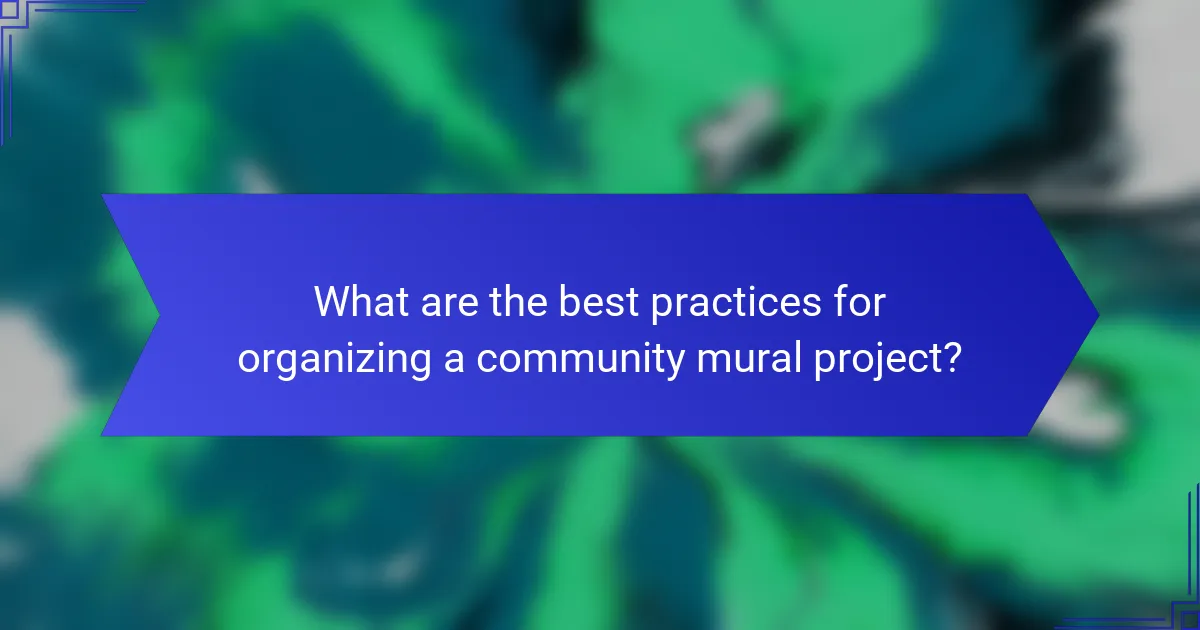
What are the best practices for organizing a community mural project?
To successfully organize a community mural project, it’s essential to follow best practices that ensure clarity, collaboration, and resource management. These practices include establishing a clear vision, involving local artists, securing funding, and creating a structured timeline.
Establishing a clear vision
A clear vision is the foundation of any community mural project. This vision should reflect the community’s identity, values, and aspirations, guiding all decisions throughout the process. Engage community members in discussions to gather ideas and ensure the mural resonates with local sentiments.
Consider creating a mood board or a visual representation of the proposed themes and styles. This can help align everyone’s expectations and serve as a reference point during the project’s development.
Involving local artists
Involving local artists not only enhances the mural’s quality but also fosters community pride and ownership. Reach out to artists through local art organizations, social media, or community events to find those interested in participating.
Offer opportunities for artists to showcase their skills, such as workshops or collaborative sessions. This engagement can build relationships and encourage a sense of community among participants, ultimately enriching the mural’s impact.
Securing funding and resources
Funding is crucial for covering materials, artist fees, and other project expenses. Explore various funding sources, including local government grants, community fundraising events, and sponsorship from local businesses. Each source may come with different requirements, so be prepared to tailor your proposals accordingly.
Additionally, consider in-kind donations, such as paint, supplies, or volunteer labor, to stretch your budget further. Creating a detailed budget plan can help identify potential shortfalls and ensure all necessary resources are accounted for.
Creating a timeline and milestones
A well-defined timeline with specific milestones helps keep the project on track and ensures accountability among participants. Start by outlining key phases, such as planning, design, execution, and unveiling, and assign realistic deadlines for each phase.
Regular check-ins and updates can help maintain momentum and address any challenges that arise. Consider using project management tools or simple spreadsheets to track progress and keep everyone informed of their responsibilities and deadlines.
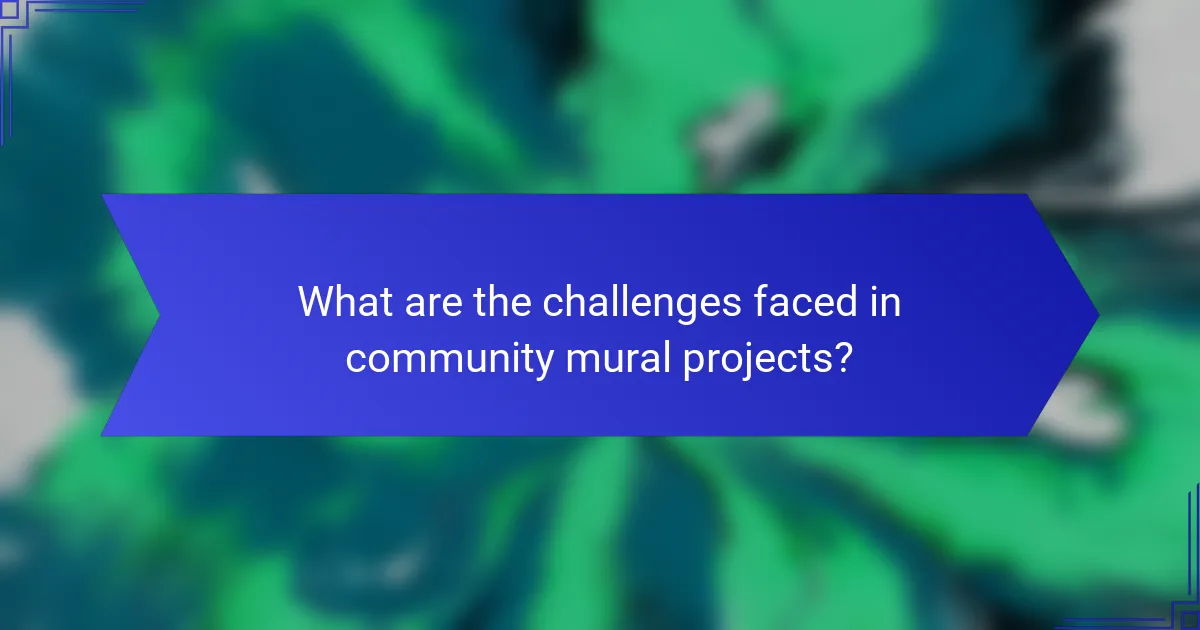
What are the challenges faced in community mural projects?
Community mural projects often encounter several challenges that can hinder their success, including funding limitations and community resistance. Addressing these obstacles is crucial for fostering engagement and ensuring the project’s sustainability.
Funding limitations
Funding limitations are a significant hurdle for community mural projects, as they often rely on grants, donations, or local sponsorships. Securing adequate financial support can be difficult, especially for projects in economically disadvantaged areas.
To navigate funding challenges, project organizers should explore multiple funding sources, such as local arts councils, crowdfunding platforms, and community fundraising events. Creating a detailed budget and demonstrating the project’s potential impact can help attract financial support.
Community resistance
Community resistance can arise when residents feel excluded from the mural planning process or disagree with the proposed design. Engaging the community early and incorporating their feedback is essential to mitigate this resistance.
Organizers should hold public meetings, workshops, or surveys to gather input and foster a sense of ownership among community members. Building relationships with local stakeholders and addressing concerns can lead to stronger support and collaboration throughout the project.

